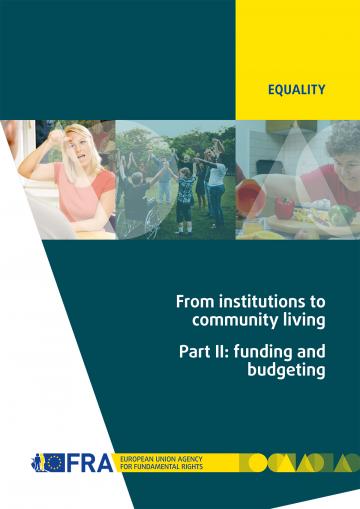Bridging the gap between the promise of Article 19 and the reality that persons with disabilities experience likely requires a shift in the way services are funded. A great deal of knowledge and experience in each of these areas is being gathered across EU Member States. This report and the two other reports in FRA’s three-part series dedicated to this topic provide important insights that can support ongoing processes of change.
For additional information, see the summary overview of the different types of institutional and community-based services (pdf, 824 KB) for persons with disabilities available in each of the EU Member States.
 Also available in easy read format.
Also available in easy read format.
Key findings
- A fundamental shift in how services for persons with disabilities are funded is needed to realise the right to independent living for persons with disabilities in practice. This includes redirecting investment from institutions to personalised services in the community that persons with disabilities guide and control.
- European Structural and Investment Funds (ESIF) play an important role in supporting deinstitutionalisation in many EU Member States. Some funding has, however, previously been spent on renovating existing institutions or building new institutions.
- For the 2014–2020 funding period, the EU has introduced measures to ensure that ESIF support deinstitutionalisation, in particular conditions that must be fulfilled before funds can be spent (so-called exante conditionalities). Civil society has a crucial role to play in formal and informal monitoring of the use of the funds to ensure that these measures are applied in practice.
- Various levels and sectors of government share responsibility for funding deinstitutionalisation and community-based services. The involvement of a complex mix of public authorities, sources of funding and types of service providers can result in regional disparities in service provision within Member States.
- Many Member States continue to invest considerable resources in institutions for persons with disabilities. This does not promote the goal of independent living under Article 19 of the CRPD.
- Where deinstitutionalisation strategies are in place and accompanied by specific budget allocations, they can be a basis for targeted funding for the transition from institutional to community-based support.
- There is a lack of robust, comparable and timely data on budget allocations for services for persons with disabilities within individual Member States and across the EU. This impedes evidence-based policymaking and undermines efforts to achieve deinstitutionalisation.

 Also available in easy read format.
Also available in easy read format.